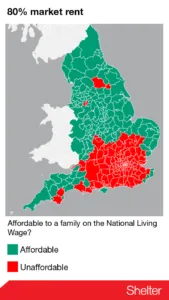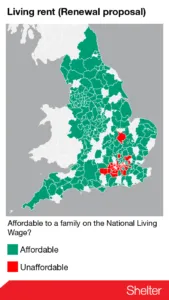Autumn Statement 2016: what is needed to help the ‘just about managing’ classes?
Published: by Steve Akehurst
We are now a little under a month away from the Autumn Statement 2016, the first of Theresa May’s government.
Though these set pieces – ‘fiscal events’ as civil servants term them – can feel a little overblown, they do really matter.
Firstly of course because public investment, while not the be all and end all, remains an important part of solving the housing crisis, especially when it comes to homelessness and affordability issues*. But secondly, and more importantly, because these occasions provide a window into the thinking of the government of the day – where their policy priorities lie and how much they really want to help particular groups of people, beyond the froth of commentary.
Roughly a year ago George Osborne used the Autumn Statement to double the Affordable Homes Programme, which funds the construction of new affordable homes. As we said at the time, this was a welcome commitment. But as we also pointed out, the mix of funding was largely aimed at home ownership products – Starter Homes, shared ownership – that tend to only be affordable to those priced out on middle incomes. That spoke to a broader view Osborne had of housing policy as primarily a means by which to target middle income voters, at the expense of other priorities if necessary (a theme that continued into the Housing Bill).
Quite a bit has changed in Westminster since then. Noises are now being made that Theresa May’s new government will use the Autumn Statement to shift some money in the AHP back towards affordable homes to rent. This is partly because affordable homes to rent build out quicker than homes for ownership, but also because it’s more in tune with the PM’s broader push for lower income, ‘just about managing’ voters left behind by Osborne’s funding package last year.
These are really welcome signals. These sort of discount rented homes help prevent homelessness and give low income families security, while the low rents help them meet payments and even save up a deposit.
So, if the intention to fund affordable homes to rent again is real, what is needed to help the ‘just about managing’ classes the PM cares about? New research by Shelter today, written up in The Sun, gives us an indication.
We’ve looked at what is affordable to a typical family earning the new National Living Wage in every area of the country. We’ve compared three forms of housing:
- Private market rents
- Affordable Rent homes (homes with rents at roughly 80% of market rate), introduced by Osborne in the last Parliament (though cut back last year).
- The ‘Conservative Living Rent’ idea, where rents are linked to no more than 1/3 of a low earners salary, suggested by Renewal in a recent paper for us. This is similar to social rent, though a little higher and more flexible.
You can see the results in map form below. The full report and results for each local authority is here. In short we found:
- Private market rents work fine for low earners in a few, lower cost parts of the country. The need for affordable homes to rent is less urgent in these areas.
- Affordable Rent is fine for low earners in many parts of England, particularly in the North East and West. But in high pressure areas like the East of England, the South West, totalling 47% of the country, something else is needed. Affordable Rent doesn’t work here, because it’s pegged to market rents and market rents are too high.
- Only a product with lower rents, like the Renewal proposal of a Living Rent, is affordable to low earning families in a majority of the country. Lower rents help them meet payments, and give them breathing room to start saving for a place of their own.
This at the very least makes the case that any funding settlement has to be flexible. One size doesn’t fit all. Affordable Rent can work in some parts of the country, but funding for lower rent products has to be made available for other areas.
In the table below, I’ve drawn out a few politically salient areas to show this is not just a central London problem.



The best thing the government can do next month, then, if they want to help those on low incomes, is make sure there is a range of products funded that can work for them in every corner of the country. Homes at lower rents in high cost areas will also make a huge difference to local authority’s ability to tackle homelessness; it’s precisely the sort of resource that would make the provisions contained in the government’s new Homelessness Reduction Bill a reality rather than an aspiration.
Affordable to a family on the Living Wage?

—
Footnotes:
*This is because, as Pete explains, while building more private market homes is an important part of ending the housing crisis, it will never be sufficient on its own. It’s highly unlikely any private housebuilding market, even a better one than we have now, will build so many private homes that it will bring rents and prices down so low that those on very low incomes in every part of the country can afford them. There will probably always be a significant chunk of the population that need affordable homes at discounted rents.